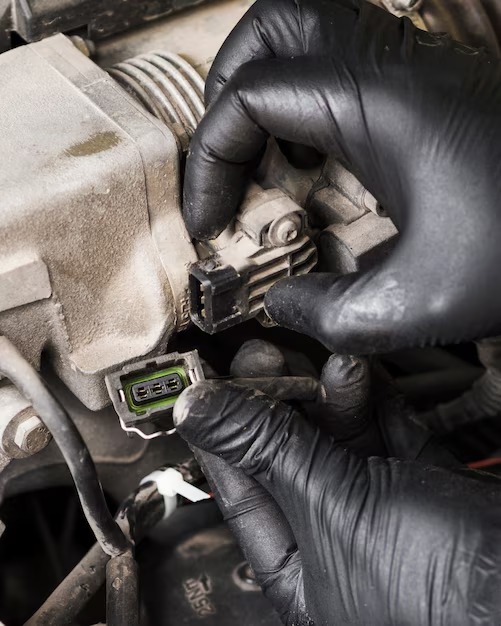Why is Driving School so Expensive
Embarking on the journey of obtaining a driver’s license can often prove to be a considerable investment in one’s personal and financial resources. The process of learning to drive requires comprehensive education, practical training, and rigorous examination to ensure that aspiring drivers possess the necessary skills and knowledge to safely navigate the roads. However, this pursuit is not without its hurdles, as learners are confronted with a hefty price tag that accompanies such an undertaking.
Driving schools, synonymous with competence and trustworthiness in teaching novice drivers, are renowned for their reputable programs. Nonetheless, the cost associated with these driving schools has become a subject of growing concern, with many potential learners questioning why the expenses are so high. The answer lies in a series of factors that contribute to the overall cost, including the quality of education, the expertise of instructors, the utilization of modern technology, and the provision of necessary resources.
One of the key factors leading to the high cost of driving school pertains to the quality of education delivered. Driving schools that prioritize imparting comprehensive knowledge and skills must invest heavily in hiring proficient instructors with specialized training. These instructors, often possessing a wealth of experience in the field, are entrusted with equipping learners with a thorough understanding of traffic rules, defensive driving techniques, and vehicle control. Consequently, the expertise of these instructors and the personalized attention they provide greatly influence the cost of driving education.
The Rising Costs of Driving Instruction
As the prices of learning to drive continue to soar, it is crucial to understand the reasons behind the significant increase in the cost of driving instruction. This section will delve into the various factors contributing to the escalating expenses associated with acquiring a driver’s license.
One of the primary drivers of the mounting costs stems from the increasing demand for driving instructors. With more individuals seeking to obtain a license, the industry has experienced a surge in the need for qualified professionals. Consequently, the limited supply of certified instructors has constituted a significant factor in the rising prices of driving instruction.
An additional factor that has contributed to the escalating cost of learning to drive is the advanced technology incorporated into modern vehicles. As cars become more sophisticated, equipped with safety features and driving assistance systems, the training required for instructors has become more complex and specialized. Thus, the expenditure associated with acquiring and maintaining up-to-date teaching materials and vehicles has inflated the overall cost of providing driving instruction.
Furthermore, the regulatory requirements imposed by government bodies have had a substantial impact on the rising costs. Stricter regulations necessitate instructors to undergo enhanced training and certification processes, resulting in higher expenses for both instructors and driving schools. Additionally, the compliance costs associated with meeting the necessary standards and maintaining proper documentation have further contributed to the overall increase in driving instruction costs.
Another aspect influencing the rising costs of driving instruction is the cost of insurance. Driving schools are obliged to secure adequate insurance coverage to protect both their instructors and students. As insurance premiums continue to increase due to various factors such as heightened accident rates, the expenses associated with driving instruction have also been affected.
| Factors Contributing to Rising Costs |
|---|
| Increasing demand for driving instructors |
| Advanced technology in vehicles |
| Stricter regulatory requirements |
| Cost of insurance |
Factors Influencing the High Price of Driving Lessons
Various elements contribute to the elevated cost of driving lessons. These factors encompass a multitude of aspects that affect the overall expense associated with acquiring a driver’s license. Understanding these influences is crucial in comprehending the reasons behind the high price tag attached to driving school.
Economic Factors
One of the significant factors that impact the high cost of driving lessons is the economic environment. Fluctuating fuel prices, insurance expenses, and maintenance costs of vehicles used for training can significantly influence the overall price of driving lessons. The rising costs in these areas ultimately get passed on to the learner driver, contributing to the high price.
Instructor Competence and Experience
The level of competence and experience of the driving instructor directly affects the price of driving lessons. Instructors with extensive expertise and qualifications often come at a higher cost due to their exceptional skill set and ability to provide comprehensive training. The quality of instruction plays a vital role in ensuring learners acquire the necessary skills and knowledge to become safe and responsible drivers.
By considering and analyzing these and other influencing factors, it becomes apparent why driving lessons come with a significant price tag. Recognizing the underlying elements behind the high costs leads to a better understanding of the overall expenses involved in acquiring a driver’s license.
Quality vs Price: Is It Worth the High Cost?
In the realm of driving education, the concept of quality versus price is a topic of utmost importance. Many individuals contemplating enrolling in a driving school are often faced with the dilemma of balancing the desire for high-quality instruction with the concern over the associated cost. This section aims to explore the intricate relationship between quality and price in the context of driving school, delving into whether the high cost of such institutions is truly justified.
Weighing the Importance of Quality
When considering the value of enrolling in a driving school, one cannot underestimate the significance of quality instruction. The level of expertise, experience, and professionalism exhibited by instructors directly impacts the efficacy of the education received. Quality driving schools employ experienced instructors who possess the necessary skills to effectively impart essential knowledge and techniques. Furthermore, reputable institutions often provide comprehensive curricula and up-to-date materials, ensuring that students receive a well-rounded education in the field of driving.
The Price Factor: Is It Justifiable?
While the high cost of driving school may initially deter some individuals, it is essential to evaluate the potential long-term benefits and cost-effectiveness associated with quality instruction. Investing in a reputable driving school can potentially result in a greater likelihood of passing driving exams, obtaining a driver’s license, and ultimately becoming a safer and more competent driver. Additionally, the skills acquired through quality driving education can lead to reduced insurance premiums, fewer accidents, and overall savings in the long run. Therefore, it is crucial to consider the potential return on investment when scrutinizing the price tag attached to driving school.
Exploring Additional Expenses in Driving Education
Investigating supplementary costs in acquiring driving skills enables a comprehensive understanding of the financial obligations associated with driver education. This section delves into the various expenditures beyond the primary tuition fees, exploring the wide range of additional expenses that aspiring drivers encounter.
The Cost of Study Material
Aside from tuition fees, prospective drivers may need to allocate funds for study materials necessary to prepare for the theoretical exam. These resources often include textbooks, practice tests, online courses, and educational software. The cost of these materials can vary depending on the provider and the level of detail and comprehensiveness desired.
Vehicle Maintenance and Insurance
During the driving education process, learners are required to practice on the road, which involves using a vehicle. This entails taking into account the costs of maintaining the vehicle such as fuel expenses, regular servicing, repairs, and insurance coverage. The frequency of these expenses largely depends on the duration of the driving lessons and the number of practice hours required.
Furthermore, full-time driving schools may provide insurance coverage for their learners, while part-time or independent instructors may require learners to obtain their own learner driver insurance, adding to the overall cost of obtaining a driving license.
Exploring these additional expenses in driving education illuminates the financial commitment necessary to obtain the skills and knowledge needed to become a safe and responsible driver. Understanding these costs is crucial for individuals planning to pursue their driver’s license to effectively budget and make informed decisions.
Alternative Options to Traditional Driving Schools
Exploring different approaches to acquiring driving skills can be a viable solution for individuals seeking alternatives to traditional driving schools. By thinking outside the box, prospective drivers can explore a range of alternative options that may offer flexibility, accessibility, and potential cost savings. This section will delve into some of these alternative options, highlighting their benefits and considerations.
Online Driving Courses
One alternative option that has gained popularity in recent years is online driving courses. These courses provide an opportunity for individuals to learn the rules of the road and acquire essential driving knowledge through web-based platforms. Online driving courses offer the convenience of self-paced learning, allowing students to fit their studies around their schedules. Additionally, they may offer interactive features, such as simulated driving scenarios, to enhance the learning experience. However, it is important to note that online driving courses may not be available or recognized in all jurisdictions, so it is crucial to verify their validity before enrolling.
Private Driving Instructors
Another alternative option is engaging private driving instructors. Unlike traditional driving schools, private driving instructors offer personalized, one-on-one instruction tailored to the specific needs and learning pace of the student. This individualized approach allows for focused attention on weak areas and more efficient progress. Additionally, private driving instructors may provide the flexibility of scheduling lessons based on the student’s availability. However, it is essential to research and select reputable instructors to ensure quality instruction and adherence to local driving regulations.
| Alternative Option | Benefits | Considerations |
|---|---|---|
| Online Driving Courses | 1. Flexibility 2. Self-paced learning 3. interactive features |
1. Validity in jurisdiction 2. Limited practical driving experience |
| Private Driving Instructors | 1. Personalized instruction 2. Focused attention 3. Flexible scheduling |
1. Selection of reputable instructors 2. Adherence to local driving regulations |
While these alternative options provide potential advantages, it is important to carefully evaluate each option’s suitability based on individual preferences, learning style, and jurisdiction-specific requirements. Conducting thorough research and seeking recommendations can help prospective drivers make informed decisions that best meet their needs.
Strategies to Lower Driving School Costs without Compromising Quality
Exploring ways to reduce expenses while maintaining the high standard of education in driver training programs can be challenging. However, several effective strategies can help lower the costs associated with attending a driving school without compromising the quality of the instruction received.
1. Research and Compare Prices
One of the first steps to reduce the cost of driving school is to thoroughly research and compare prices among different schools. Look for establishments that offer competitive rates without compromising the quality of their programs. This will help you find the best value for your money while ensuring you receive proper training and instruction.
2. Utilize Discounts and Promotions
Many driving schools provide discounts or promotional offers to attract new students or reward loyal customers. Take advantage of these opportunities by inquiring about any available discounts or promotions when enrolling. It could result in significant savings without sacrificing the quality of your driving education.
Furthermore, some driving schools offer package deals or bundled services that combine multiple lessons at a discounted rate. Be sure to explore these options to optimize your savings.
Overall, while the cost of driving school can be high, implementing these strategies can help you lower expenses without compromising the quality of education you receive. By conducting thorough research, taking advantage of available discounts and promotions, and considering bundled packages, you can find a driving school that fits your budget without sacrificing the necessary skills and knowledge to become a safe and responsible driver.
Q&A: Why is driving school so expensive
What are the typical requirements for new drivers to take a driving test, including the necessary hours of driving practice?
For new drivers to take a driving test, most states require a specific number of hours of driving practice. Typically, new drivers must complete between 30 to 50 hours of driving, including both daytime and nighttime practice. Additionally, many states mandate a behind-the-wheel training course with a certified instructor. This comprehensive preparation ensures that new drivers are well-practiced and assured of their driving skills before attempting the driving test.
How can new drivers prepare for the behind-the-wheel portion of their driving test to feel more assured?
New drivers can prepare for the behind-the-wheel portion of their driving test by accumulating the required hours of driving practice in various conditions, such as night driving, highway driving, and inclement weather. It’s also beneficial to take a formal behind-the-wheel training course with a professional instructor who can provide valuable feedback and guidance. Regular practice sessions, adhering to traffic laws, and building confidence in different driving scenarios will help new drivers feel more assured during their driving test.
Why are driving lessons so expensive, and how much does driving school cost on average to ensure new drivers are well-prepared and assured behind the wheel?
Driving lessons are so expensive due to several factors, including the cost of maintaining a fleet of vehicles, comprehensive insurance, and paying for qualified instructors. Driving schools must also invest in dual-control vehicles, safety equipment, and regulatory compliance. On average, driving school costs can range from $50 to $150 per hour for behind-the-wheel instruction, with comprehensive packages typically ranging from $300 to $800. Despite the high cost, these expenses ensure that new drivers receive quality education, thorough practice, and feel assured and well-prepared behind the wheel.
What are the average prices to expect for driving lessons in 2024, and how do these prices reflect the quality of instruction?
In 2024, the average prices to expect for driving lessons range from $50 to $150 per hour. Comprehensive packages that include both classroom instruction and behind-the-wheel practice driving typically range from $300 to $800. These prices reflect the quality of instruction, the experience of driving schools and instructors, and the additional costs of maintaining vehicles and complying with safety regulations. Investing in quality lessons can help you become a good driver and pass your driving test with confidence.
Why is it important to choose a reputable driving school, and what factors should you consider when selecting one?
Choosing a reputable driving school is crucial because it ensures you receive proper driver’s education and practice driving skills from qualified instructors. Factors to consider when selecting a school include the qualifications of the instructors, the condition of the vehicles (including dual controls), and the balance of classroom instruction and behind-the-wheel training. Reputable schools often provide a structured driver’s ed course that prepares you well for both the theory test and the road test.
What is the average cost of a driver education course, and what services are typically included?
The average cost of a driver education course can vary widely, but you can expect to pay between $300 and $800 for a comprehensive package. These courses typically include classroom instruction, a certain number of hours of driving instruction, and preparation for the theory test and road test. Some packages may also offer additional services such as simulated driving experiences and access to online resources to enhance your learning.
How can an intensive driving course help you become assured in your ability to drive, and what are the typical costs?
An intensive driving course can help you become assured in your ability to drive by providing concentrated, immersive instruction over a short period, usually one to two weeks. These courses often include several hours of driving practice each day, allowing you to quickly build skills and confidence. The total cost for an intensive driving course typically ranges from $800 to $2,000, depending on the number of lessons and services offered.
How can choosing a driving school help you become assured in your driving abilities, and what factors should you consider given the cost of living and potential car insurance benefits?
Choosing a driving school can help you become assured in your driving abilities by providing structured lessons that teach good driving habits and ensure you are able to drive confidently and safely. Factors to consider when choosing a driving school include the qualifications of the instructors, the hourly rate (typically between $50 to $150 per hour), and the total cost of the program, which should reflect the quality of instruction and resources provided. Schools charge these rates to cover the cost of living expenses and maintaining training vehicles. Additionally, completing a drivers ed program can benefit you by potentially lowering your car insurance rates, as many insurance companies offer discounts to those who have received certified instruction from a reputable driving school. The department of motor vehicles often lists approved schools, which can guide you in making an informed decision.








